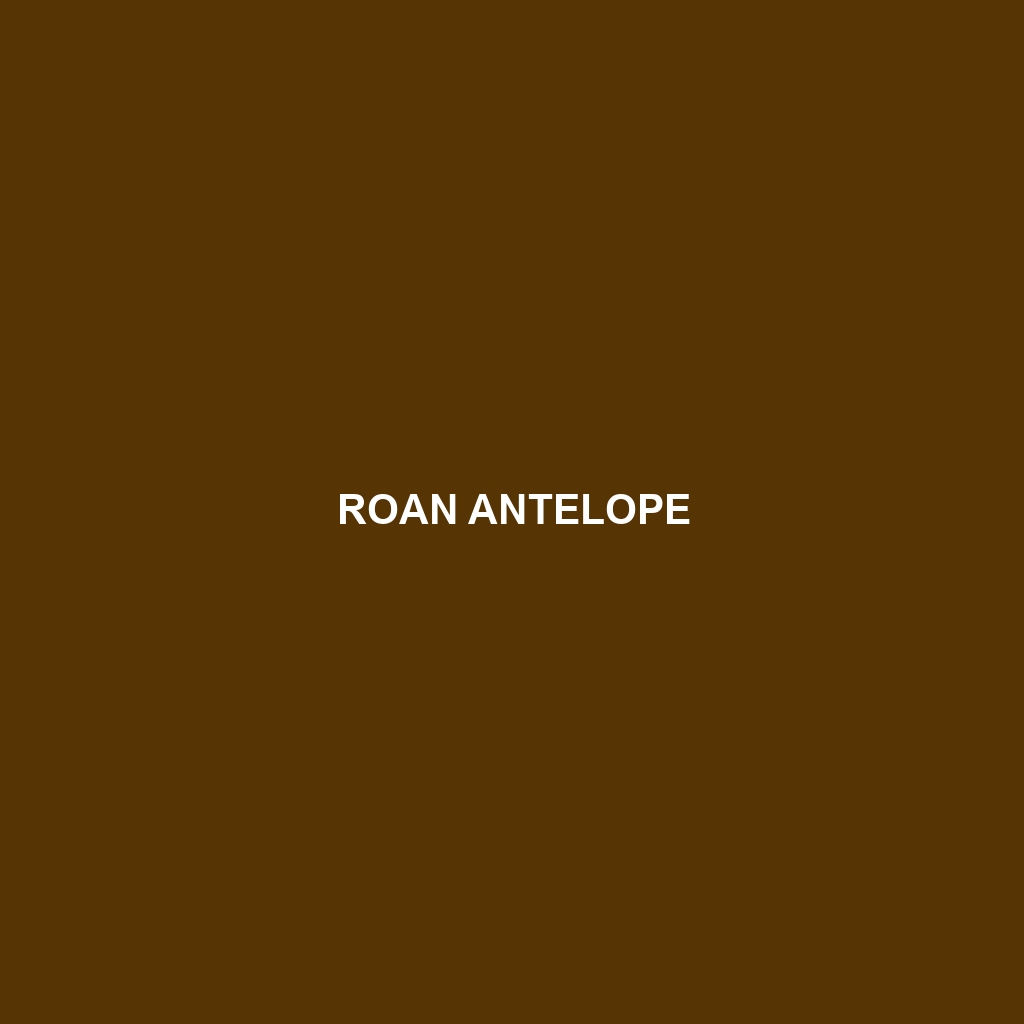Species Description: Roan Antelope
Common Name: Roan Antelope
Scientific Name: Hippotragus equinus
Habitat
The Roan Antelope is primarily found in the savannas and grasslands of sub-Saharan Africa. Key geographic locations include regions of Angola, Botswana, Cameroon, Central African Republic, Ghana, Namibia, and Zambia. They thrive in open environments where tall grasses and scattered trees provide both forage and cover from predators.
Physical Characteristics
Roan Antelopes are characterized by their impressive size, typically weighing between 400 to 600 pounds and standing about 3 to 4 feet at the shoulder. Their coat is a distinctive reddish-brown color, darkening with age, while males possess a striking black facial mask and long, slightly curved horns that can reach up to 3 feet in length. The body shape is robust with a prominent chest and long legs, ideal for swift movement across their habitat.
Behavior
Roan Antelope are known for their sociable nature, often forming small herds led by a dominant male. These herds typically consist of females and their young, with males establishing territories through displays of dominance, including vocalizations and physical posturing. They exhibit a crepuscular behavior, being most active during dawn and dusk, which helps them avoid the heat of midday.
Diet
As herbivores, Roan Antelopes primarily feed on a variety of grasses, leaves, and shoots. Their diet consists of both nutritious grass types and tougher, less palatable species, which they consume depending on availability. This adaptability in feeding habits enables them to thrive in varied environments and contributes to their role in maintaining grassland ecosystems.
Reproduction
Roan Antelopes have a breeding season that peaks during the rainy months, when resources are abundant. After a gestation period of about 9 months, females typically give birth to a single calf, which they protect fiercely. Mothers hide their young in thick cover for the first few weeks, returning periodically to nurse them. Calves become more mobile after a couple of weeks and generally stay with their mothers until they are about a year old.
Conservation Status
Currently, the Roan Antelope is classified as vulnerable on the IUCN Red List. Their populations have declined due to habitat loss, hunting, and competition with livestock. Conservation efforts are ongoing to protect their habitats and ensure the survival of this remarkable species.
Interesting Facts
One fascinating fact about the Roan Antelope is that they are known for their unique communication skills. They use a variety of vocalizations, including loud barks and grunts, to convey messages within their herds. Additionally, Roan Antelopes are often confused with other antelope species, but their distinctive facial features and robust build set them apart.
Role in Ecosystem
The Roan Antelope plays a crucial role in its ecosystem by helping to manage vegetation through its grazing habits. Their selective browsing keeps grasslands healthy and promotes biodiversity by allowing various plant species to thrive. They are also an important prey species for large predators, contributing to the ecological balance.
